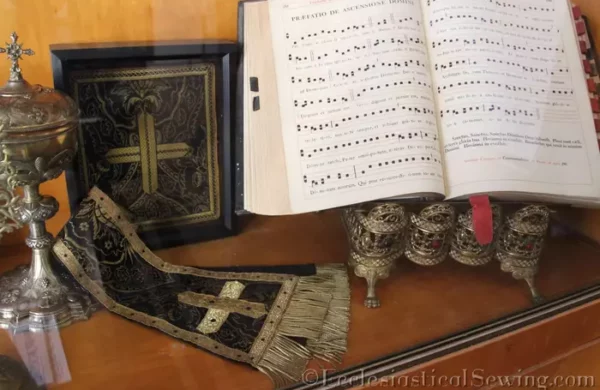
Vintage Church Vestment Surprise
Vintage church vestment treasures at St. Leo Monastery in Florida, Discovering a cross, made from galloon trim, the Wakefield liturgical fabric and the maniple.
Liturgical vestments and altar hangings play a vital role in Christian religious services. Enhancing the worship experience with an extra layer of meaning and symbolism. Priests and pastors commonly wear liturgical garments such as the chasuble and the Alb during Mass celebrations. With the chasuble covering the body and often featuring ornate designs and symbols. And the Alb, a long white robe, worn by priests. Another liturgical vestment, the stole, a long, narrow scarf-like garment worn around the neck. Usually decorated with symbols representing the liturgical season or occasion.
On the other hand, altar hangings, and decorative textiles adorning the front of the altar, add beauty and meaning to the worship ceremony. They can be changed according to the liturgical season, with common types including frontals, superfrontals, and lectern hangings.
Liturgical vestments and altar hangings have a rich tradition and symbolism. Connecting worshipers with the history and traditions of the Church. Each vestment and style carries unique meaning and significance. Ecclesiastical Sewing addresses the liturgical needs of churches and religious organizations. Offering a diverse range of quality vestments and church hanging patterns, from traditional chasubles to functional superfrontals. We always have the perfect item for your liturgical preference.

Vintage church vestment treasures at St. Leo Monastery in Florida, Discovering a cross, made from galloon trim, the Wakefield liturgical fabric and the maniple.
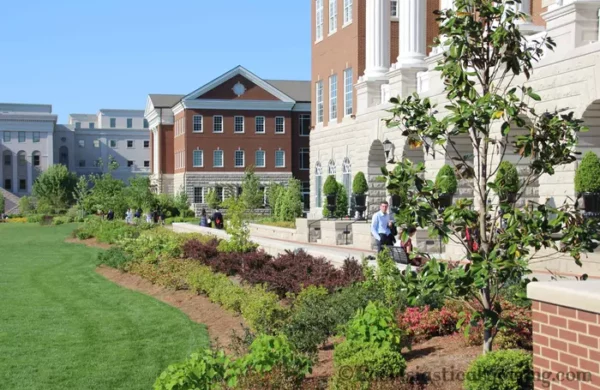
Embroidery inspiration found in Nashville and Belmont University’s beautiful campus. Academic gowns and hoods, often using Ecclesiastical fabrics, hint at the connection between university and church wear. Upcoming projects feature St. Aidan and Cloister fabrics, a popular choice for both.
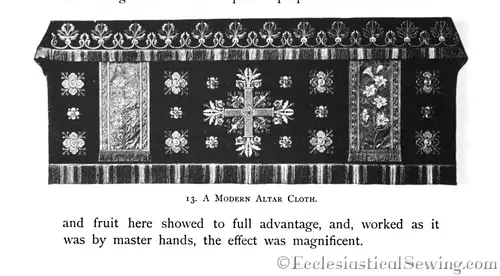
Ideas for reusing these older vestment pieces can be creative and meaningful. Considering remaking older vestments into new pieces, if it should be remade or restored?
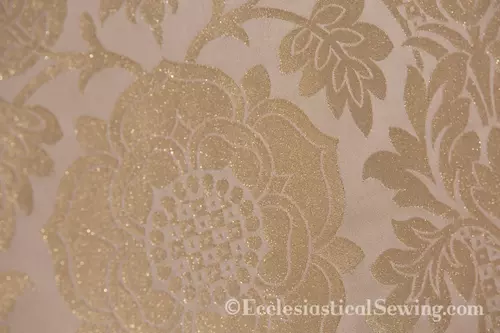
The fabrics selection on this project is St. Margaret in the Ivory Lurex color and St. Hubert in the Gold/Gold color. Oak Leaf gallon was used to edge the orphrey, and a metallic gold thread fringe graces the lower edge of the superfrontal and frontal. The superfrontal is made entirely from the Gold/Gold St. Hubert with the metallic gold fringe as the only adornment. The frontal is made using St. Margaret as the base fabric, with orphreys of St. Hubert in Gold/Gold with the 1-inch wide Oak Leaf galloon used to finish the edges.
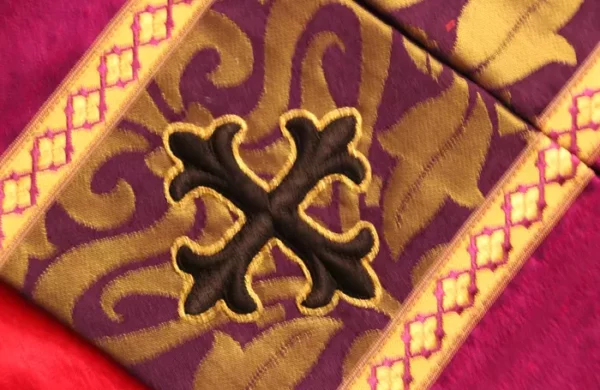
Lenten stoles with Two-Toned Fairford fabric. Featuring a unique blend of violet and gold, these stoles showcase a black cross on each orphrey band, perfect for the Penitential Season of Lent.
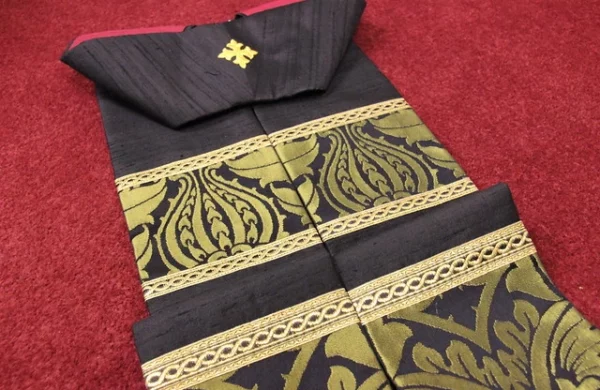
Finished Fairford Black/Gold Pastoral Stole, a farewell gift for our pastor. This stole is perfect for Ash Wednesday and Good Friday. The black silk dupioni and Fairford brocade orphrey bands in black/gold create a stunning look. with a budget-friendly materials like silk dupioni and the beautiful St. Benet braid trim. Added a cross and chain for the finishing touch.
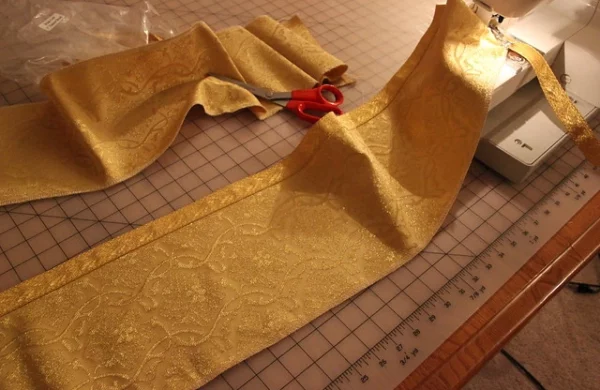
The Orphrey bands for the altar frontal will be cut from St. Hubert Gold/Gold. St. Hubert is a brocatelle Ecclesiastical Fabric originally designed by Sir Ninian Comper and produced by M. Perkins and Sons circa 1890. The fabric will be available on our new website shortly after the first of the year in several colorways, including Red/Gold, White/Gold, Blue/Gold, Black/Gold, and Gold/Gold as in the above photo. St. Hubert is one of my favorite go-to ecclesiastical fabrics. It cuts up well for use in orphrey bands. The above orphrey bands are approximately 7″ wide before adding any trims
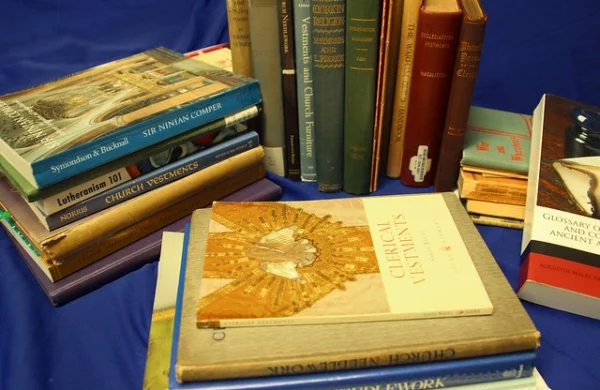
This little book (founded on a series of articles on Church Embroidery written for the ‘Treasury’) is intended for the use of those who are desirous of learning by practical experiment how to make the best use of such time and skill as they have at their command; and who, while they are unable to go through the long courses of instruction which are generally indispensable to the attainment of perfection are yet anxious to devote their ‘labour of love’ to the service of the Church. – Hinda Hands (Hands, 1907, p. 1)
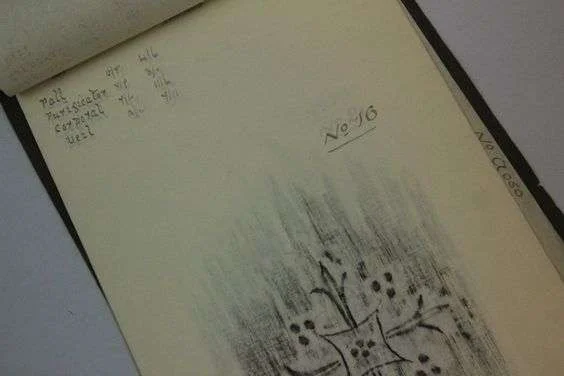
Handmade booklet with tracings and designs for hand embroidery on church linens. It includes a cross-with-crowns pattern and larger sheets with iron-on transfers for clear designs. The book also has traced hand embroidery designs and possible pricing info for different linen sizes.
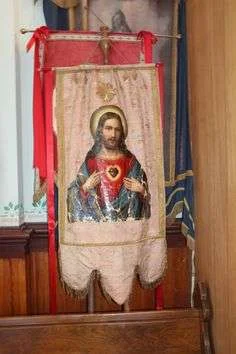
Embroidery is a perfect medium for use on banners, a true labor of love, provided there are skilled embroiderers available for the work required. But sadly, there were times when this level of devotion may not have been possible for a banner. When embroidery was not an option, banners were sometimes hand-painted like these Banners located at the Ursuline Center.
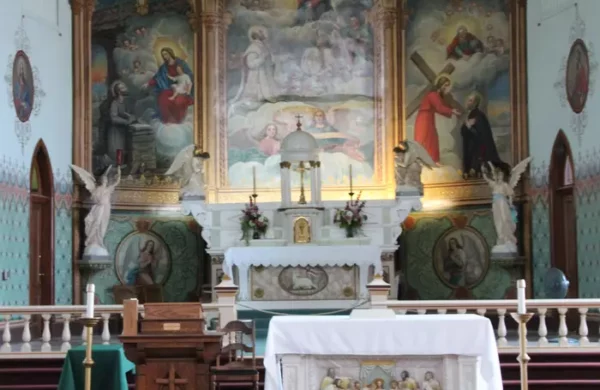
St. Ignatius Mission. The Mission is in the tiny town of St. Ignatius, MT, at the southern edge of Flathead Lake, and about forty miles north of Missoula. This is one of those remote churches that have been on the “Must See” list. With a trip to Glacier Park, it was the perfect time to visit.
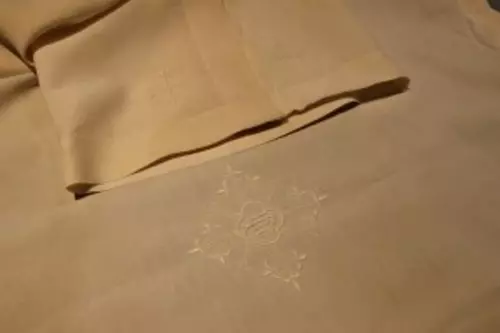
This antique Fair Linen, while stained, and scorched, with holes from a too-hot iron on one end, features a lovely hand-embroidered IHC motif in the center of the Altar Linen, surrounded by four smaller cross designs for the corners. Worked completely in white threads, the Ecclesiastical Embroidery is still lovely amid the linen stains of age. The central hand embroidery design is relatively small, considering the Fair Linen is wide and long
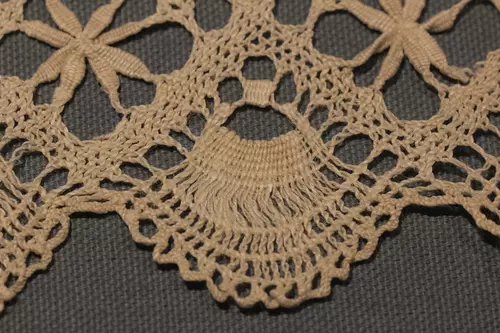
This trim features a zig-zag design filled with star-shaped motifs. Notably, it has triangular peaks at the upper edge where it attaches to the Altar Linen. An interesting detail is the deep hem of the linen, matching the trim’s depth—around 5 to 6 inches. While this may seem unusual to modern eyes, older reference books mention long Fair Linens having deep hems, especially if they reach close to the floor. The added weight from a deep hem likely contributes to the Fair Linen hanging well.
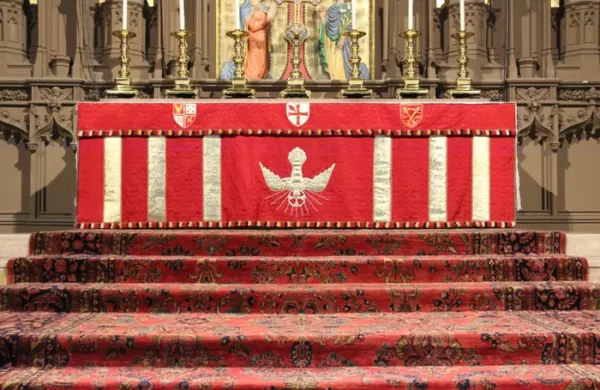
Features of Church architecture and Church Vestments awaiting our viewing pleasure.
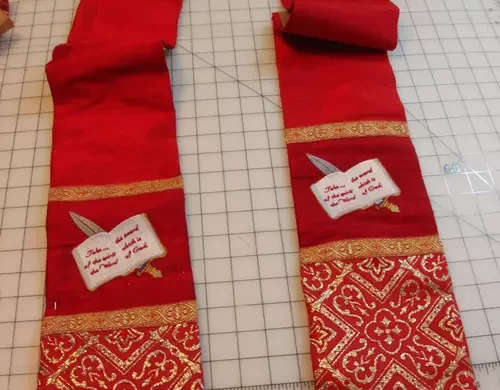
To easily buy the Red Dupioni Silk for the stole base, opt for pre-cut “stole quarters” tailored for a 4″³ pastoral stole or wider/longer lengths for V-back and other styles. A pastoral “stole quarter” is around 14”³ wide by 60”³ long. Similar to quilters buying “fat quarters” for minimal waste, this is a smart approach. Instead of a 60”³ length of 45”³ or 54”³ wide fabric, you purchase just enough for one stole. costs under $20.
You must be logged in to post a comment.